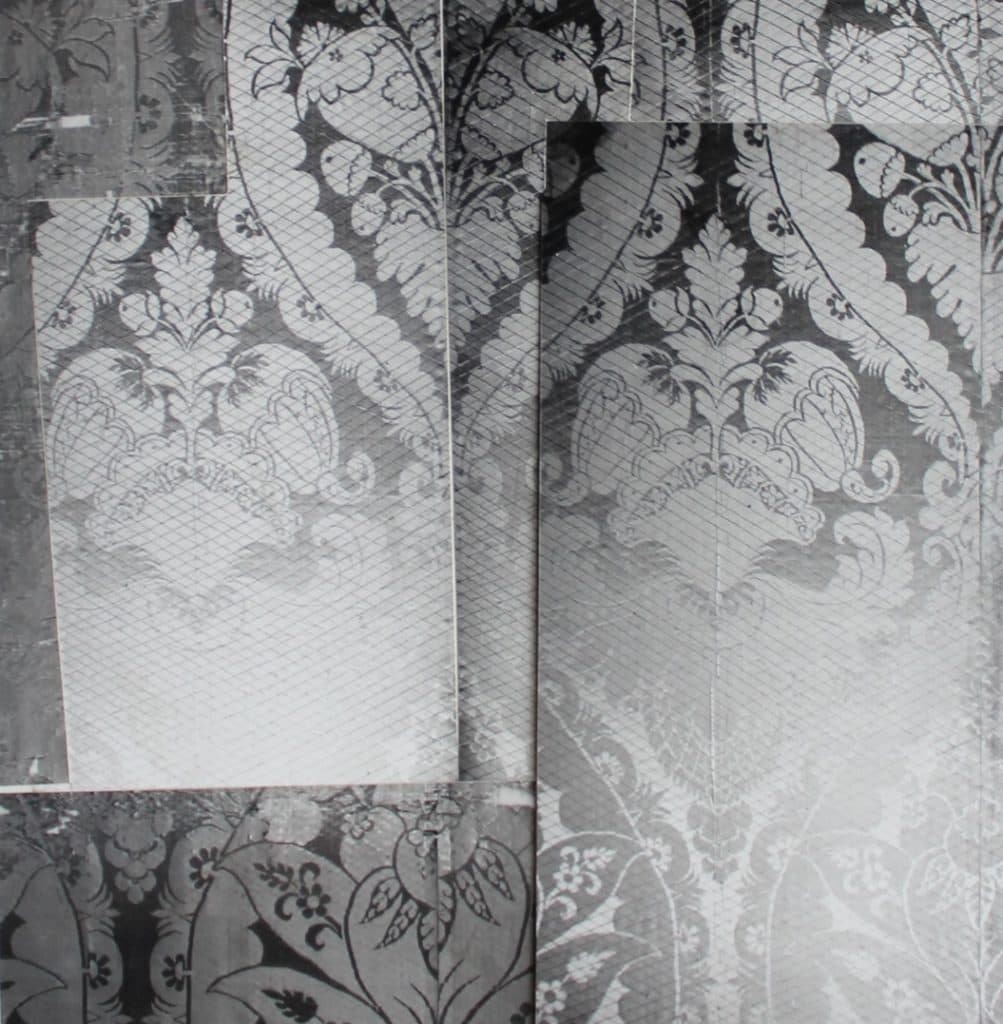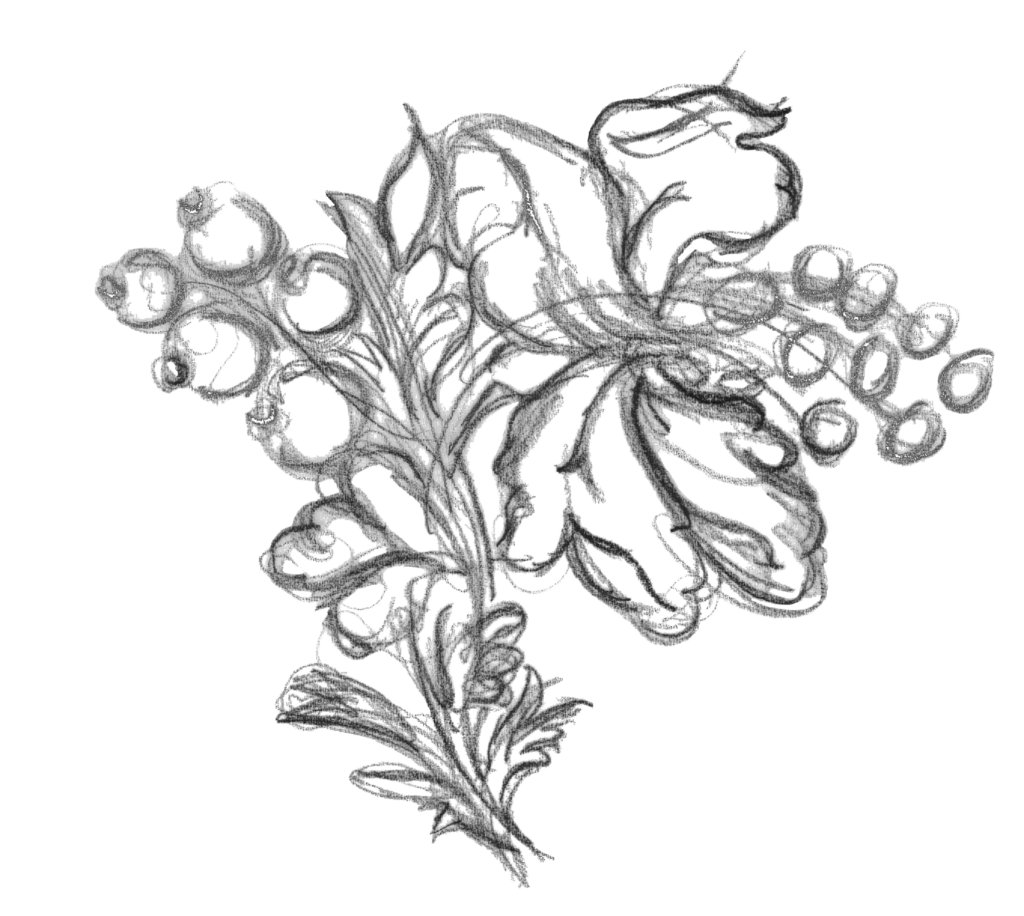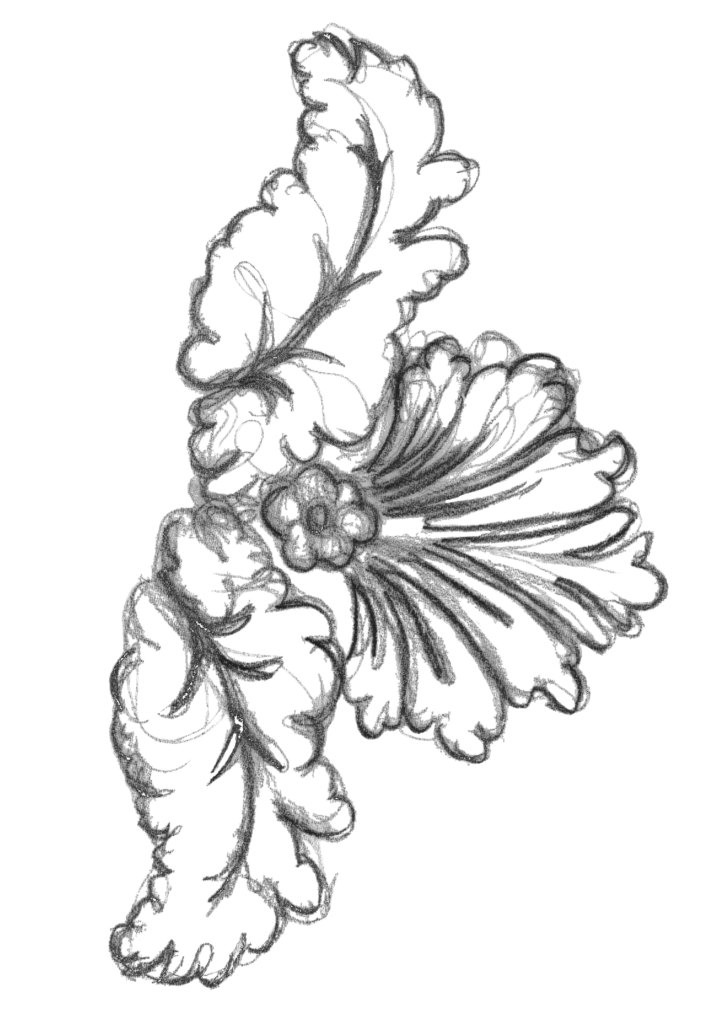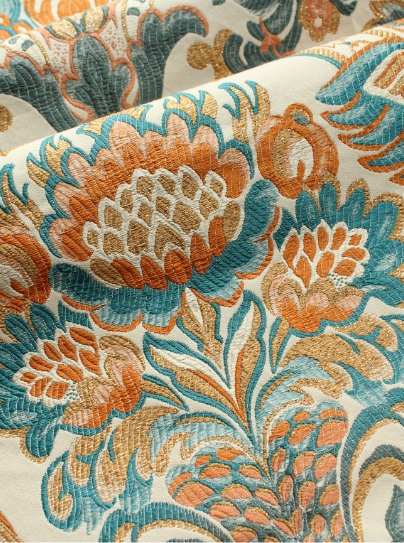The Great Beds of Humphries – Part 3
Almost from the very start of the business has woven cloths for beds in important places which have required the weaving skills of Humphries Weaving to restore them to their former glory. Here we bring together the vast array of woven cloths woven for Great Beds that can be seen in museum collections, palaces and houses.
In this third installment we will be looking at some Royal beds, including the travelling bed of King George II. The first and second installments of ‘The Great Beds of Humphries can be found here.
Queen Caroline’s Bed at Hampton Court Palace
The Magnificent tall four poster bed stands in the original bedroom it was designed for at Hampton Court Palace. Today the appearance is very grand, with all the drapes and linings in tack. But it was not like this prior to a major restoration which took place in the early 1980’s. The original crimson silk damask bed drapes had all but rotted away and hung on the bed in shreds. The exposure to light over many decades had washed away the brilliance of the once vivid crimson shade that graced the hangings. The fragmented remains of the curtains were far too fragile to travel to the Humphries Weaving studio to be drawn. But by laying out the cloth on the floor at the Palace we were able to photograph the remaining evidence. There, within the rotted folds of the bed drapes lay segments of the pattern still visible after so long, being neglected since the early 18th century. The various parts of the photographed pattern were redrawn by hand and pieced together. Once the first drawing of the design was completed, it was compared to the original fragments. This enabled us to regain the original pattern named “Caroline” in all its former splendour. The design was thought to be Italian in its origins. Similar patterns are to be seen on beds at both Doddington Hall and Blickling Hall (National Trust). The crimson shade was dyed to match the best found reference hidden away from the light and dust. The tester on the bed remained in remarkably good order with the interior underside very well preserved. The silk lustring linings had all but disappeared, however in the dismantling of the curtains good fragments were found for the colour match. Our archive numbers of 643/702 reveal that the weaving began in 1983 and took over a year to complete before work on the bed restoration began.
The Cut Velvet Bed at Hardwick Hall
This bed was made in about 1740 by Thomas Vardy and was originally at Chatsworth House, Derbyshire. It was brought to Hardwick Hall by the 6th Duke of Devonshire as part of his antiquarian redecoration of Hardwick during the first half of the nineteenth century. The bed drapes of this bed are made of a two pile cut velvet woven on a satin ground, known as Genoese hand cut velvet. This fabric is a superb example of possibly the most complex style of hand weaving incorporating the hand cutting of the figuring in the design with a blade to create the velvet pile. To weave the amount of velvet on this bed would amount to around a year’s work at the loom. This velvet was in a state of good repair despite its age and use. The bed drapes and head board were upholstered in a finely narrow woven five end satin weave in a pale apple shade of green to compliment the tones of colour in the figured cut velvet. We received a textile fragment from the bed to match the colour in 1987, this not only showed the original shade but also the silk thickness used in the construction on the satin weave. The fabric was made broadloom style to be hand sewn in narrow 21 inch widths to copy the original seam plan. Despite its age and fragility the bed head centre section although faded was still intact and so both the old and the new fabrics are displayed together side by side.
King George II Travelling Bed
When the King of England went on his travels throughout his Kingdom in the 18th century, he took his beloved bed with him and went camping, or perhaps he was glamping! The bed was designed to be dismantled and consisted of a mere 54 components which slotted together to create the unique structure. Mobile beds in Royal circles was nothing new and many beds were built to be easily dismantled in order that the King and his court could be easily transported. The bed itself still survives and is a four post structure, the heavy damask bed drapes would have provided some welcome protection from the chill of the night air. By the 1990’s the drapes had long fallen into disrepair and all that remained were decayed scraps of the once grand opulence of the fabric. We carefully took photographs of the remaining fragments of the design. When placed together the original design was thought to be Italian in origin. The exact same fabric design was also found to be used in the mid-18th Century decoration of the Bedchamber of the Dauphin at Versailles.
The design named “Kensington” was rewoven in the deepest crimson pure silk to compliment the remaining fragments which have been retained in the current conservation. The bed is now on permanent display at Hampton Court Palace.

The images of the last remaining fragments from the George II travelling bed
The Countess of Suffolk’s Bed at Marble Hill
The design used on George II travelling bed has since been used at both Kensington Palace in the Kings State apartments and for the bedroom of Henrietta Howard, Countess of Suffolk, Marble Hill House, Chiswick. We supplied green pure silk damask woven narrow for walling and window drapes at Marble Hill House. The green shade used here was matched to the Prince of Wales green at Hampton Court Palace. The countess was the daughter of Charles II mistress Barbara Palmer, 1st Duchess of Cleveland.







